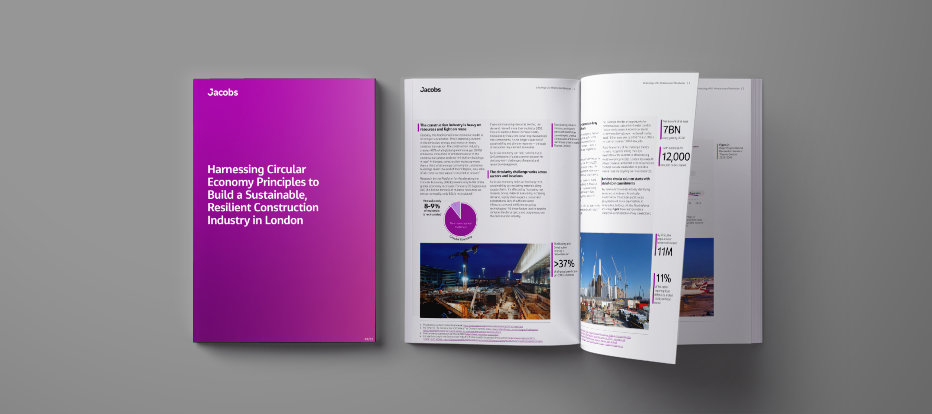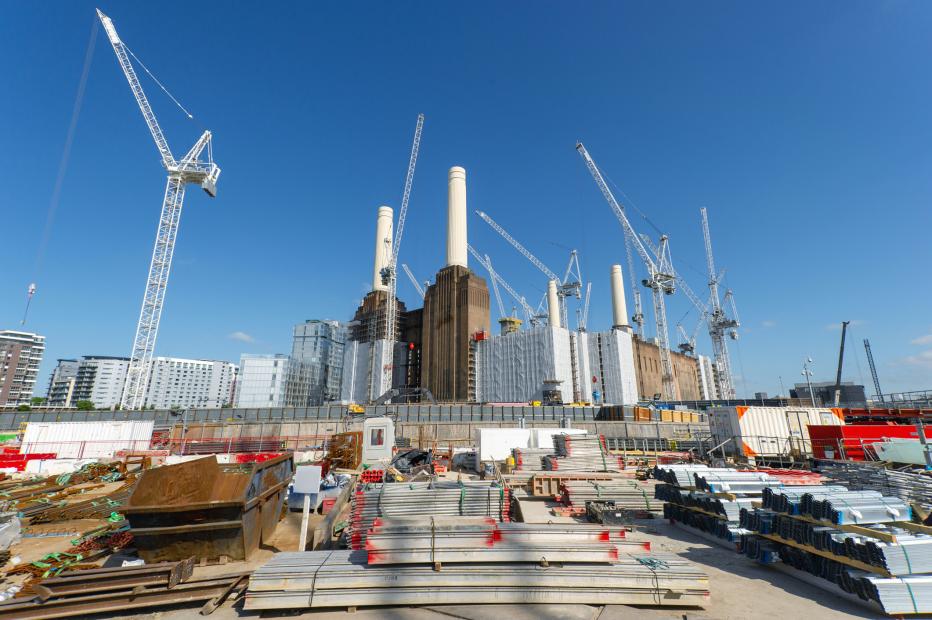
Circular economy is a key driver in future-proofing cities for long-term sustainable growth. Learn how London’s construction industry is adopting a circular economy approach to manage ever-growing demands of the city.
In our latest insight paper, we:
- Explain what circular economy is and its benefits.
- Describe how London’s construction industry is adopting a circular economy approach.
- Outline foundations/factors that contribute to the successful adoption of a circular economy.
- Make the case for the London Thames corridor to be a focus for circular economy collaboration.
Did you know that only 8-9% of the global economy is circular? This reveals a huge circularity gap to be addressed.
Globally, the traditional linear economic model is no longer sustainable. A circular economy is needed to help curb the rise in greenhouse gas (GHG) emissions, of which the construction industry is responsible for 40%. It’s also a solution that will provide long-term economic, social and environmental benefits. If we continue with our current resource usage, the demand rate will more than double by 2050, leading to a drastic increase in GHG emissions and threats to supply of materials needed for development.
There is a clear case for adopting a circular economy approach, especially on major infrastructure projects, as this will help achieve long-term sustainability by enabling materials to circulate along critical supply chains. However, this is currently affected by fluctuating raw material prices, scarce materials, increasing demand, supply chain capacity, consumers’ expectations, lack of sufficient waste infrastructure and the use of inefficient recycling technologies.

This paper focuses on harnessing London’s construction industry as a circular economy catalyst.
The London Plan identifies that “unprecedented levels of regeneration and development” will be needed to future-proof its status as a successful, pioneering first-world city. The ever-growing city needs to ensure it can keep up with the demand created and this requires more materials, more housing and putting pressure on resources.
Future-proofing the growth of London and the Thames Corridor relies on a circular economy foundation.
Meet the author
Louisa Williams, Associate Director, Water and Environment
Louisa has over 20 years’ experience in resources, management and waste management. She has extensive experience in circular economy and resource efficiency on large infrastructure projects, which compliments her waste and materials compliance and planning knowledge. She has an operational background (working for Suez for four years) which helps influence practical circular waste solutions. Louisa helps clients to develop and encourage circular solutions at both construction and operational stages to meet regulatory requirements.












































